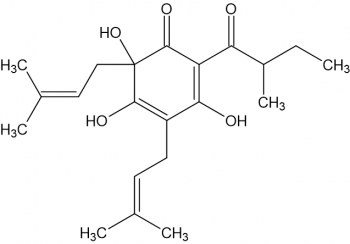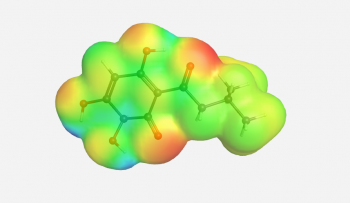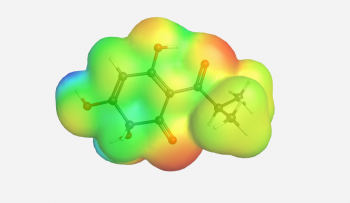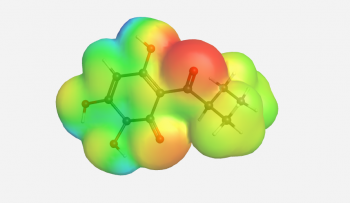Difference between revisions of "Logan"
Logan Evans (talk | contribs) |
Logan Evans (talk | contribs) |
||
| Line 1: | Line 1: | ||
=A Computational Analysis of Electrostatic Potential in Humulone, Cohumulone, and Adhumulone= | =A Computational Analysis of Electrostatic Potential in Humulone, Cohumulone, and Adhumulone= | ||
| + | In this experiment, I will be looking at the electrostatic potential of these alpha acids, which are present in hops. In my chromatographic experiments, cohumulone elutes alone, while humulone and adhumulone elute together in one peak. My hypothesis is that humulone and adhumulone will have similar electrostatic maps, displaying the similarity in their polarities (the reason they would elute together). | ||
==Structures of Humulone, Cohumulone, and Adhumulone== | ==Structures of Humulone, Cohumulone, and Adhumulone== | ||
{| | {| | ||
| Line 16: | Line 17: | ||
|} | |} | ||
| − | Here we see the electrostatic potential maps of the three compounds. In Flash Chromatography, cohumulone separates independently, but adhumulone and humulone do not separate from each other. Instead, they elute in the same peak. | + | Here we see the electrostatic potential maps of the three compounds. In Flash Chromatography (reverse phase, C-18 columns), cohumulone separates independently, but adhumulone and humulone do not separate from each other. Instead, they elute in the same peak. Based on our electrostatic maps, this seems suprising. The humulone and cohumulone maps appear to be more similar than humulone and adhumulone. The cohumulone has more electrostaic potential on the oxygen near the top right of the molecule, while the other two do not exhibit this. One would assume that the polarity of the cohumulone and humulone would be more similar due to this, but this does not appear to be the case. Overall, this experiment did not provide positive results for the hypothesis, and further calculations would need to be performed to understand this phenomenon. |
Revision as of 21:29, 15 April 2021
A Computational Analysis of Electrostatic Potential in Humulone, Cohumulone, and Adhumulone
In this experiment, I will be looking at the electrostatic potential of these alpha acids, which are present in hops. In my chromatographic experiments, cohumulone elutes alone, while humulone and adhumulone elute together in one peak. My hypothesis is that humulone and adhumulone will have similar electrostatic maps, displaying the similarity in their polarities (the reason they would elute together).
Structures of Humulone, Cohumulone, and Adhumulone
| Humulone | Cohumulone | Adhumulone | |
 |
 |
 |
The structures of these three alpha acids are incredibly similar. The only difference is an alkyl substituent change is the top right of the molecule. We are setting out to determine if this substituent change will lead to a change in the electrostatic potential of the molecules.
Electrostatic Potential Maps of Humulone, Cohumulone, and Adhumulone
| Humulone | Cohumulone | Adhumulone | |
 |
 |
 |
Here we see the electrostatic potential maps of the three compounds. In Flash Chromatography (reverse phase, C-18 columns), cohumulone separates independently, but adhumulone and humulone do not separate from each other. Instead, they elute in the same peak. Based on our electrostatic maps, this seems suprising. The humulone and cohumulone maps appear to be more similar than humulone and adhumulone. The cohumulone has more electrostaic potential on the oxygen near the top right of the molecule, while the other two do not exhibit this. One would assume that the polarity of the cohumulone and humulone would be more similar due to this, but this does not appear to be the case. Overall, this experiment did not provide positive results for the hypothesis, and further calculations would need to be performed to understand this phenomenon.